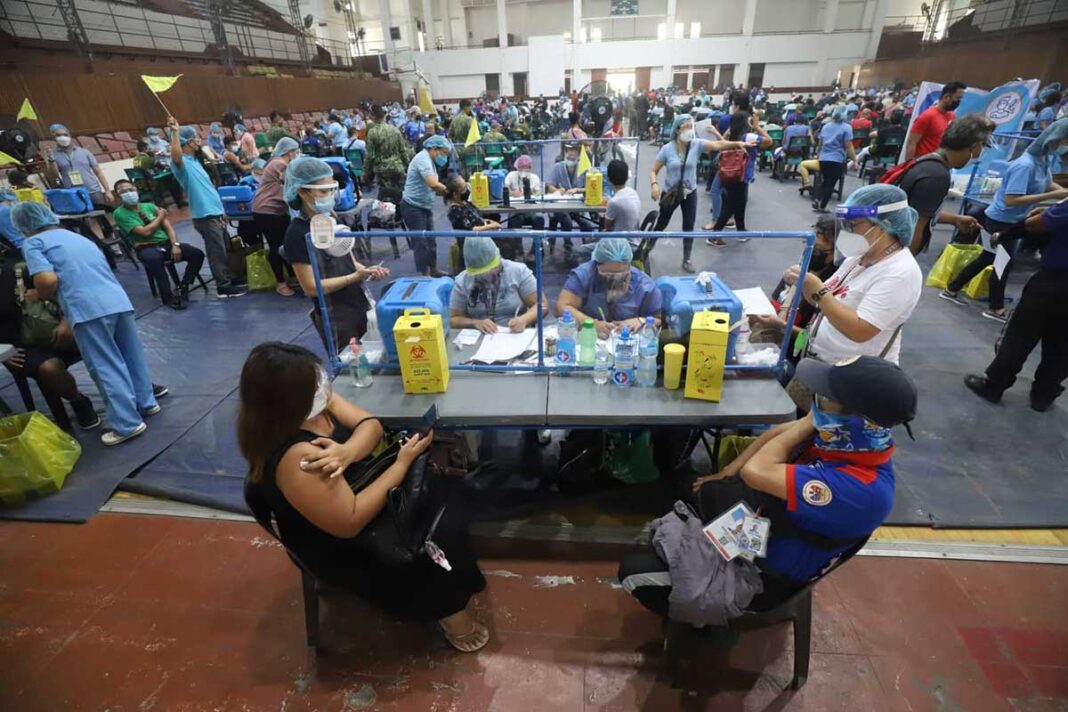Iloilo City – The latest data presented by the Department of Health-Western Visayas Center for Health Development (DOH-WV CHD) on Monday indicated a continuing decline in new coronavirus disease 2019 (COVID-19) cases in the region as well as related hospitalizations.
Dr. Marie Jocelyn Te, Medical Officer III of the DOH-WV CHD, presented the region’s latest figures during their regular program Isyung Bakuna on July 5, 2021.
DOH-WV CHD data indicated that as of July 4, the region logged 68,950 confirmed COVID-19 cases (11,195 active cases, 56,161 recoveries, and 1,574 deaths), with average cases per day at 633 (June) and 718 (July).
The data already includes results of saliva-based Reverse Transcription-Polymerase Chain Reaction (RT-PCR) testing by the Philippine Red Cross, which Te said was already accepted by DOH due to its similar accuracy to the swab-based RT-PCR testing.
The region’s Case Fatality Rate (CFR), or the rate of deaths out of the total number of COVID-19 cases, is at 2.28 percent, slightly higher than the June 27 rate of 2.27 percent, and still higher than the current national CFR (1.74 percent) and the global CFR (2.16 percent).
The region’s positivity rate also continued to rise as of July 4 (8.7 percent), compared to June 27 (8.4 percent), June 20 (8.0 percent), June 13 (7.7 percent), and June 5 (7.3 percent).
But Western Visayas also registered a consistent dip in the transmission of COVID-19 cases after it was classified as ‘Low Risk’ for the second week in a row, based on the DOH’s Community Quarantine Decision Framework (CQDF).
The CQDF is based on an area’s 2-Week Growth Rate (2WGR) or the rate of growth of cases in an area, and its Average Daily Attack Rate (ADAR) or the number of cases in an area per 100,000 population, both over a 14-day period.
The same framework influences national and local government authorities on appropriate community quarantine policies to be implemented in a given area.
The region’s CQDF rating was due to an intersection of its ‘Low’ 2WGR which decreased to -24 percent (1-2 weeks) from 15.49 percent (3-4 weeks), and its ‘Medium’ ADAR which also decreased from 6.28 (1-2 weeks) from 8.31 (3-4 weeks).
Iloilo City, Bacolod City, and Aklan are ‘Moderate’, while Iloilo province, Guimaras, Negros Occidental, Capiz, and Antique are rated ‘Low’.
Iloilo province presented the highest 2WGR in the past 1 to 2 weeks (-10 percent), followed by Aklan (-12 percent), Negros Occidental (-20 percent), Iloilo City (-25 percent), Bacolod City (-31 percent), Guimaras (-41 percent), Capiz (-48 percent), and Antique (-60 percent).
With all areas in the region showing negative 2WGR, they are all tagged as ‘Low’ (below 0 percent) according to the CQDF.
The regions’ Medium ADAR is due to ‘High’ ratings in the past 1 to 2 weeks for Iloilo City (16.54) and Bacolod City (13.99) as well as Aklan (10.11).
The remaining areas are in the ‘Medium’ column, including Iloilo province (6.37), Guimaras (5.34), Negros Occidental (3.66), Capiz (3.28), and Antique (2.14).
According to the CQDF, ADARs above 7 are considered as ‘High’ while those between 1 to 7 are ‘Medium’ and those below 1 are ‘Low’.
The region’s Health Care Utilization Rate (HCUR), which refers to the number of COVID-dedicated beds and mechanical ventilators, is at 59.73 percent as of July 4, a continuous decrease from previous figures on June 27 (63.55 percent), June 20 (64.19 percent), and June 13 (66.29 percent).
Iloilo City continues to have a ‘High’ HCUR (81.71 percent), while Guimaras (66.67 percent) and Capiz (66.23 percent) have ‘Medium’ HCURs.
Iloilo province (54.82 percent), Antique (52.70 percent), Bacolod City (49.55 percent), Aklan (49.40 percent) and Negros Occidental (40.63 percent) are ‘Low’.
While the HCUR is not used to determine the over-all risk rating of a region or area in the CQDF, it still influences CQ regimes.
Presidential spokesperson Harry Roque stated during his visit to Iloilo City last week that its appeal to de-escalate to a General CQ status from a Modified Enhanced CQ was denied due to its high HCUR. (Joseph Marzan via The Daily Guardian (TDG), photo courtesy of TDG)

